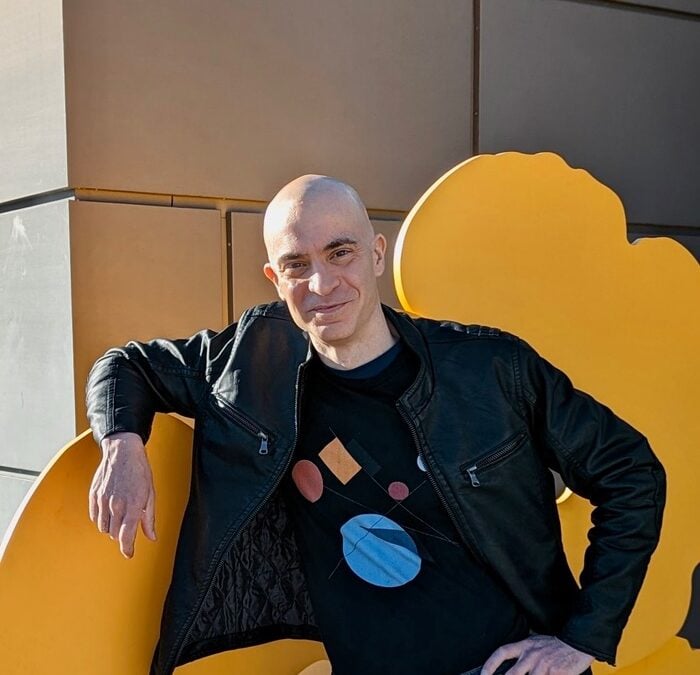The quest for immortality, or at least delayed mortality, is in full swing, with billions going into antiaging tech such as stem cell and genetic therapies. But there are also several cheap, accessible venues for people who want to take a crack at extending their lives. They include off-label use of generic drugs such as diabetes med metformin and immune-system suppressant rapamycin. Studies in mice indicate that rapamycin could extend lifespan up to about 15%. Some preliminary data in humans indicate that the rapamycin may help slow or even reverse some aspects of aging on the cellular level. However, there are also signs of potential side effects affecting muscle and the immune system.
DIY Rapamycin Trials
Clinical trials to settle these questions and uncertainty are expensive and take a long time. Meanwhile, many people feel the evidence is good enough to give them a try. And they are finding doctors willing to prescribe the medications for these personal longevity experiments. While researching a feature on the science of reverse aging (coming out next month in the Spring issue of Worth), I came across an effort by university and industry researchers to see what, if anything, can be learned from these DIY experiments with rapamycin.

The drug has an exotic origin—with the active ingredient discovered in bacteria living in the soil on Easter Island in the Pacific. It suppresses a cellular enzyme family called mTOR, the mammalian target of rapamycin. In large doses, rapamycin (and derivatives called rapalogs) is a powerful immune-system suppressant and a key drug used to prevent rejection in organ transplant patients. It also has anticancer properties.
But researchers have long suspected that lower doses could have beneficial effects without hurting the immune system. These might include improving cellular metabolism, boosting the energy-producing mitochondria, and improving the recycling of materials in cells.
“Because of this preclinical data that’s really compelling, that rapamycin is really a very robust drug in terms of extending health and lifespan, people started to take it off-label,” says Yousin Suh, who researches reproduction and genetics at Columbia University. “Especially people who know that they have risk factors for age-related diseases such as heart disease.”
One of the biggest proponents has been Dr. Alan S. Green in Queens, New York, who is studying the drug as a therapy against Alzheimer’s disease. “He started to take it himself,” says Su. “And then he started to recommend that to…his patients. So Matt and I and others collected all this data from off-label users of rapamycin.”

She’s referring to Matt Kaeberlein. He ran a namesake lab studying aging at the University of Washington from 2006-2023, before taking his research into the private sector, co-founding the company Ora Biomedical.
(Kaeberlein is also CEO of healthcare company Optispan and has equity in supplements company Novos and epigenetics startup Moonwalk Biosciences, among others. Suh is an advisor to venture capital firm LongeVC.)
“We still don’t know, in people, to what extent does rapamycin actually modulate the biology of aging, in the way that we know it does in mice,” says Kaeberlein. But he’s anxious to find out. “If it does [work the same in humans], then I think it is a powerful therapy, probably the most powerful pharmaceutical…we have to modulate the biology of aging.”
Designing a Study of Health Hackers
A lot of people are taking rapamycin to combat aging, but in different doses, on different schedules, and without scientific supervision. So the challenge for Su, Kaeberlein, and the team was to collect and process data from these people in a meaningful way.
They essentially created a crowd-sourced clinical trial. The team set up an online survey that attracted 333 adults who’d been using rapamycin off-label and 172 who had never taken it. Doses varied, but 6 mg once a week was the most common, they reported in their study (taken by 101 of the 229 men and 25 out of the 67 women).
Some clear themes emerged. Rapamycin users reported less abdominal cramps and pain, muscle tightness, eye pain, depression, and anxiety—as well as more “feelings of youthfulness.” Also interesting: People who got COVID-19 while taking rapamycin didn’t report symptoms as severe as those who didn’t take it. And none reported being hospitalized or getting long COVID.
Of course, the placebo effect could play a role here; these are people who want the drug to work. And they are self-reporting how they feel, with no “blinded” professionals assessing them objectively. But they weren’t entirely on their own: 202 of the men and 60 of the women reported taking rapamycin under the supervision of a doctor—most commonly for “healthy longevity/anti-aging.”
(Separate from this research, rapamycin is also administered by a boutique, high-tech clinic called Fountain Life. It was co-founded by Xprize founder Dr. Peter Diamandis, who personally takes rapamycin.)
The reports weren’t all rosy. Over three times as many of the rapamycin users (around 15%) reported getting canker sores, vs. those who didn’t take it. That’s a well-known side effect of the drug, however.
Interestingly, none of the more-feared side effects, such as harm to the immune system, were reported. (If the COVID reports are any guide, rapamycin may have even been helpful, and at least one formal study also indicates that low doses of the drug might be good for the immune system in older people.)
Suh points out that the longevity hackers were taking much lower doses of the drug than transplant patients (usually an initial dose of 6–15 mg, followed by 2–5 mg daily). Nor did the users report losing muscle, another suspected downside. (Likewise, there’s also a study hinting at a positive effect on muscle.)
The Limits of Informal Research
The researchers aren’t claiming to have produced anything close to a clinical study here—without scientifically conclusive proof of benefits or refutation of side effect theories. But they are cautiously optimistic. “I think we can say with some level of confidence, at the doses people are using off-label, [there was] very, very little in the way of at least short-term side effects,” says Kaeberlein, “and some evidence for some benefits.”
Based on the data and other observation of rapamycin uses, he suspects that the drug may ultimately be most helpful for people with “a high burden of chronic inflammation,” which in extreme cases can lead to autoimmune disease as they get older.
But the safety findings are the most immediate useful results. Suh and a team at Columbia have recently begun a formal clinical trial of rapamycin, specifically to see if it can slow the aging of ovaries and forestall the onset of menopause. Known as VIBRANT, for Validating Benefits of Rapamycin for Reproductive Aging Treatment, it’s so far studied about 15 people over three months. The DIY study helped the team decide on a safe level of rapamycin to give to younger participants.
Suh isn’t sure about future informal studies, though. “You have to do the right, randomized, double-blinded clinical trials to evaluate the efficacy of the drug and on the outcome,” she says.
Kaeberlein doesn’t disagree, but he does see utility in more crowdsourcing, on a larger scale. “You could imagine somebody setting up a website and saying, ‘Come put your data in here,’” he says.
Kaeberlein adds that, in his study, the participants, “were consenting, they were going through all of the process that you would go through as if it were a real clinical study. So I think if it was done that way, then yeah, you could collect data that would be valuable, and would be at least accepted by the scientific community.”







